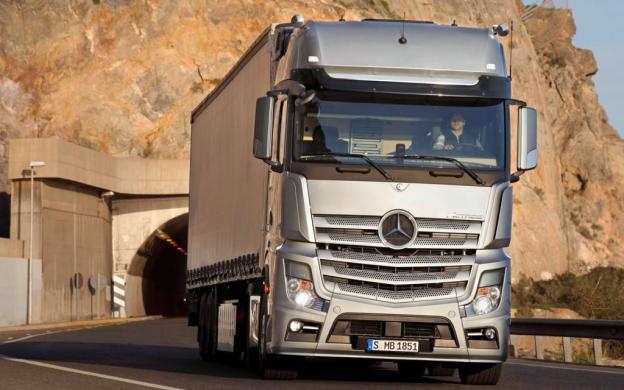 Cruise control systems are already able to keep cars from crashing into each other without the driver’s help. Now, they might also be able to help big trucks achieve better fuel economy. Mercedes-Benz’s new system, called Predictive Powertrain Control, uses GPS to read the topography ahead and shift the transmission according to the conditions.
Cruise control systems are already able to keep cars from crashing into each other without the driver’s help. Now, they might also be able to help big trucks achieve better fuel economy. Mercedes-Benz’s new system, called Predictive Powertrain Control, uses GPS to read the topography ahead and shift the transmission according to the conditions.
Cruise control applies a steady amount of throttle to maintain a constant speed, but if a truck encounters a hill or other terrain abnormality, the engine might have to work harder, or waste energy, if it is in the wrong gear. The need to adjust an engine’s workload based on terrain and speed is why cars and trucks have transmissions, instead of a fixed gear ratio. By robotizing its trucks transmissions, Mercedes hopes to wring every last drop of fuel efficiency out of its cruise control.
Mercedes says Predictive Powertrain Control increases fuel efficiency by three percent. In addition to being able to shift up to a more economical gear, the system’s EcoRoll function can automatically perform single and double downshifts. In addition to monitoring changes in topography, Predictive Powertrain Control’s computers will have to account for other drivers; a car could cut off a truck and force it to slow down. With so many variables, it will be interesting to see how effective the system is in the real world.
The system is currently offered on the Mercedes Actros truck. Mercedes has offered GPS-based cruise control on subsidiary Freightliner’s trucks since 2009, but those systems could only regulate speed, without shifting the transmission.
Mercedes has no plans to offer Predictive Powertrain Control on a passenger vehicle, but if it did, such a vehicle would be pretty close to autonomous. Current cruise control systems can keep a car at a set distance from another, even when the vehicle in front accelerates. If the cruise-equipped car can also shift its own transmission, all the driver will have to do is hold the steering wheel, and possibly apply the brakes. Highways aren’t known for their curves, and Mercedes has a collision mitigation system that can automatically brake a car, so the driver’s effort would be minimal.


